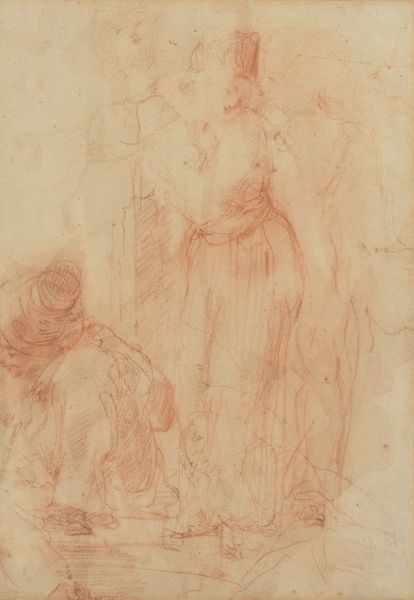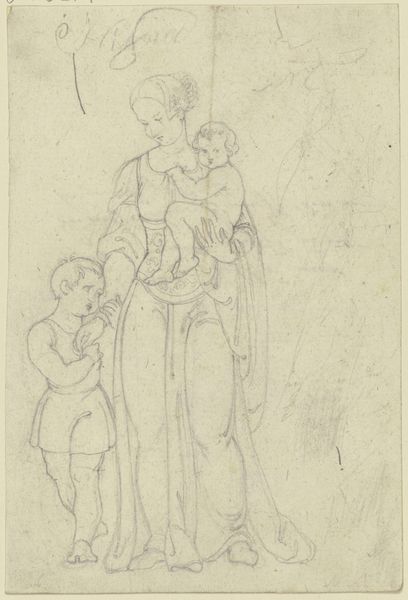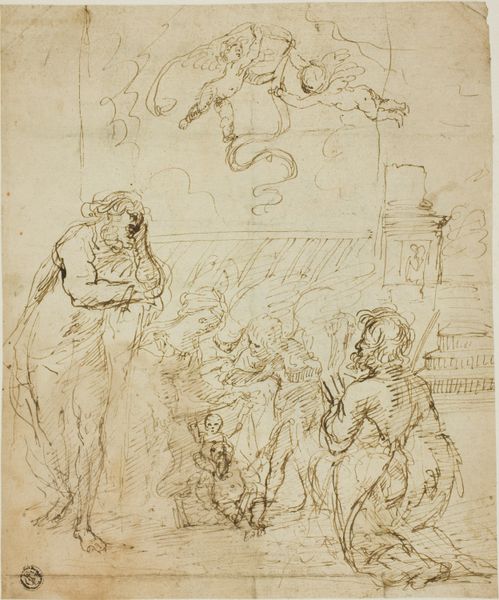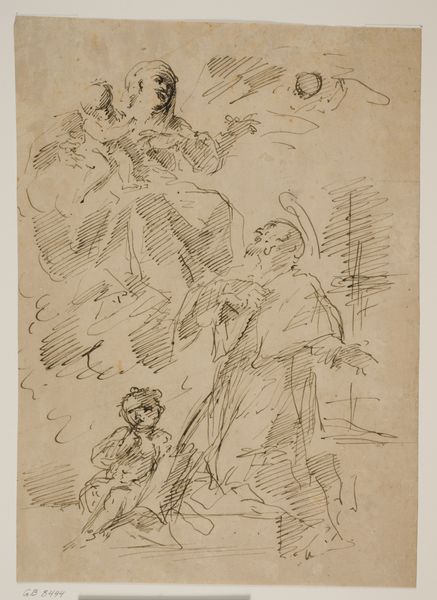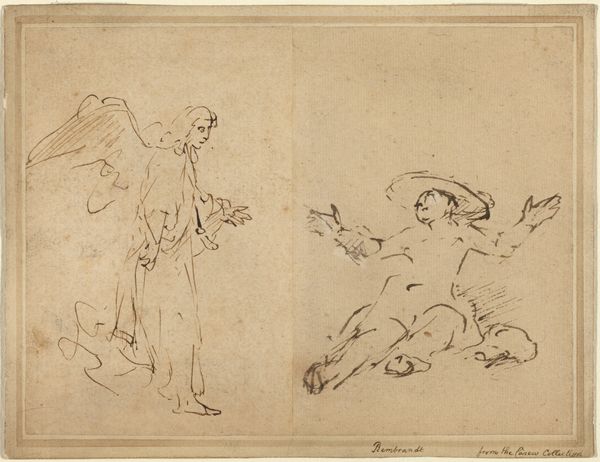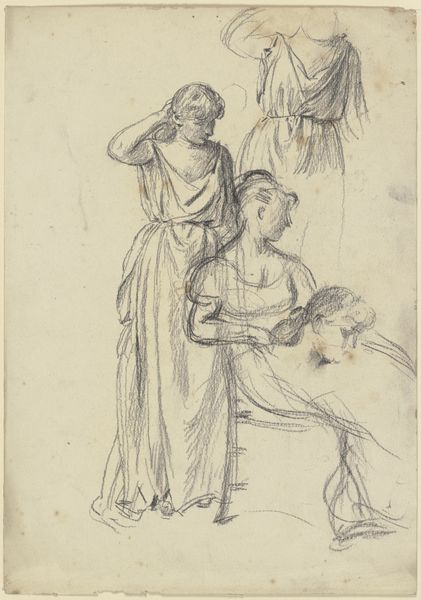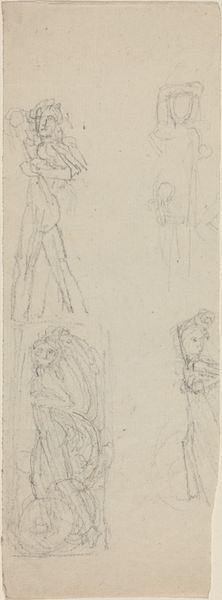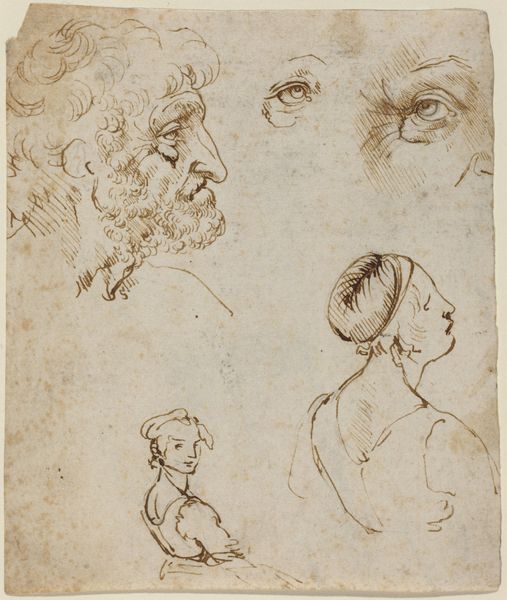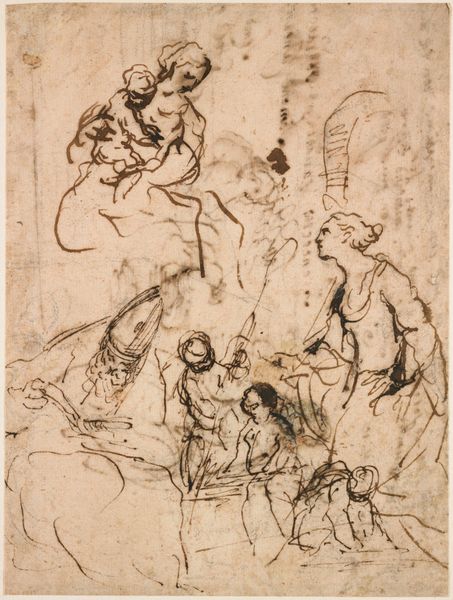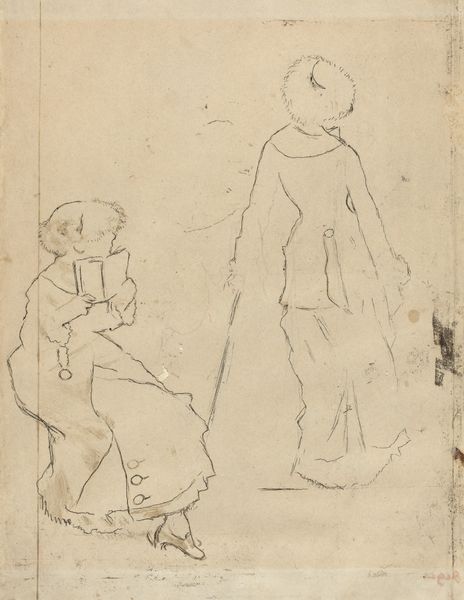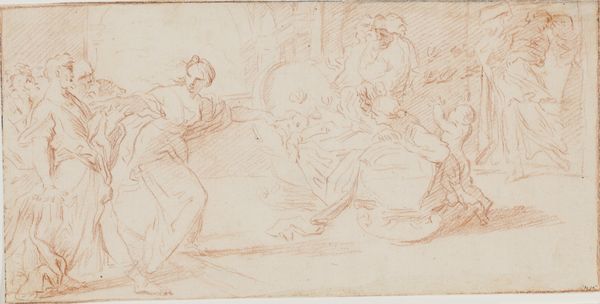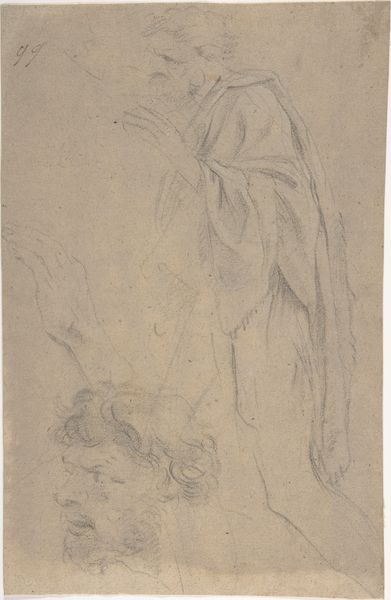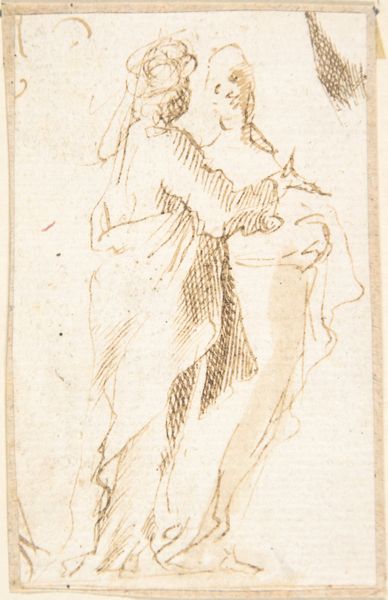
drawing, pencil
#
portrait
#
drawing
#
neoclacissism
#
pencil sketch
#
figuration
#
pencil
#
academic-art
#
watercolor
Dimensions: 89 mm (height) x 161 mm (width) (bladmaal)
Editor: This is "Figurstudier" – Figure Studies – by C.A. Lorentzen, created sometime between 1746 and 1828. It's a pencil drawing, almost a collection of sketches on a single sheet. I'm struck by the contrast between the more defined figure at the top and the looser sketches below. What historical context informs these figure studies? Curator: Well, consider the Academy. In Lorentzen’s time, the academic system heavily emphasized mastering the human form. These weren't just sketches; they were part of a rigorous training regime designed to instill a particular ideal of beauty, largely derived from classical antiquity. Do you notice the references to classical figures in the lower studies? Editor: Yes, the figures have that neoclassical idealized anatomy. Was this pursuit of the ideal linked to anything beyond artistic training? Curator: Absolutely. Think about the political climate. The late 18th century was a time of revolution, of challenging established orders. Neoclassicism, with its emphasis on reason, order, and the virtues of the Roman Republic, became associated with these new ideals. These studies, therefore, weren't just about anatomy; they were about embodying a new political and social order through the visual arts. Editor: So, the sketches weren’t simply practice but a kind of ideological exercise as well? Curator: Precisely. And think about where these studies would have been seen, primarily within the confines of the Academy, an institution invested in upholding particular values. The public display of these specific studies may not have been the point but what they enabled was the furthering of a canon, what’s often missed today in how such sketches advanced or cemented an ideology. How do you see the drawing now? Editor: I see them as more than just preliminary sketches now. The academic context provides an interesting layer of meaning to the work. Thanks! Curator: It's important to look beyond just the aesthetic qualities and think about how social and political forces shape what is created, and more importantly, what is canonized! Thanks to you for the discussion!
Comments
No comments
Be the first to comment and join the conversation on the ultimate creative platform.
